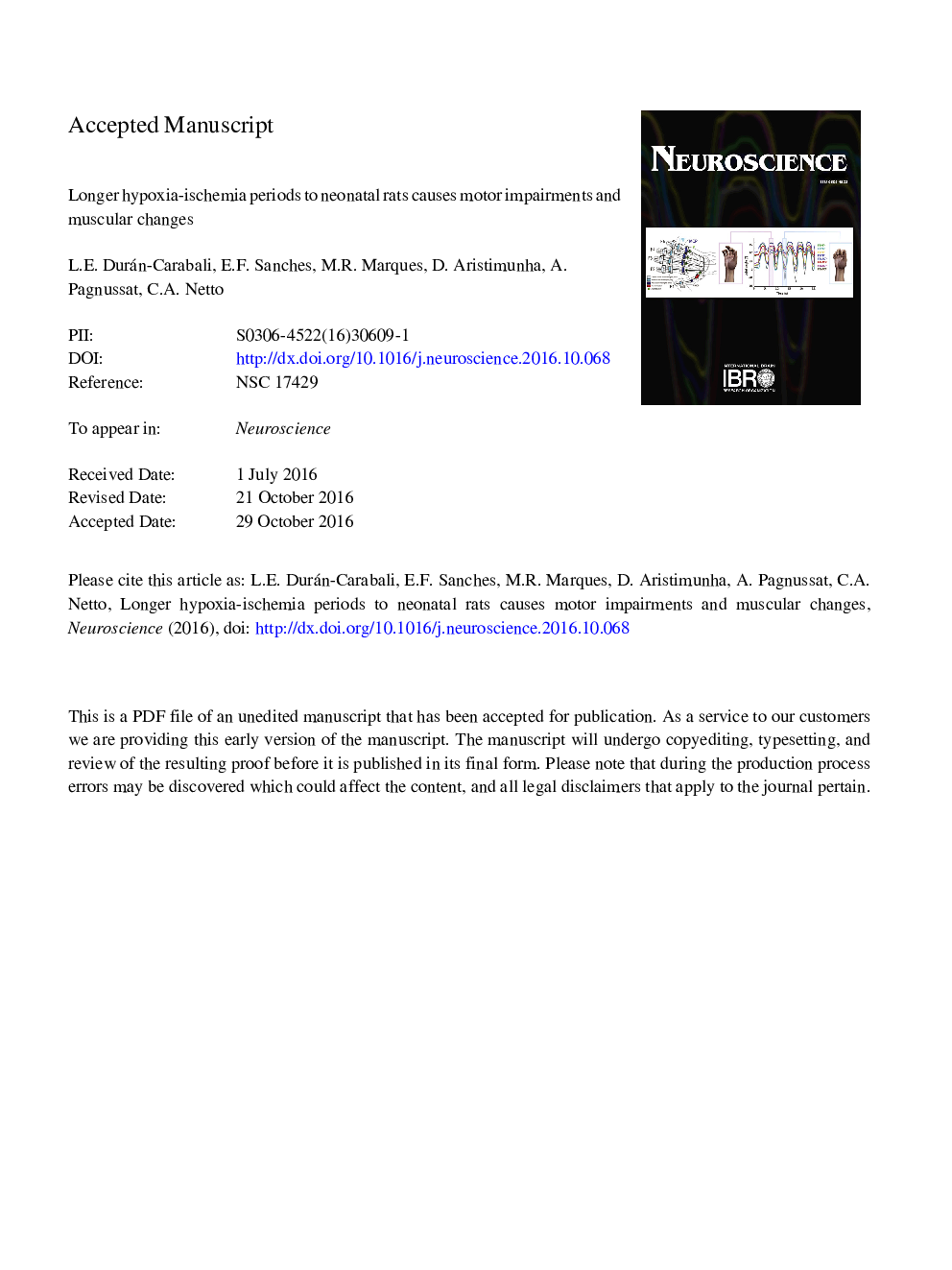| Article ID | Journal | Published Year | Pages | File Type |
|---|---|---|---|---|
| 5737552 | Neuroscience | 2017 | 25 Pages |
Abstract
Prematurity and hypoxia-ischemia (HI) can lead to movement disorders in infants. Considering that mild-moderate HI induced at postnatal day (PND) 3 has failed to produce motor disabilities similar to those seen in pre-term newborns, the main goal of the present study was to verify whether longer hypoxia periods would mimic motor function impairment, brain and muscle morphological alterations. Forty-nine Wistar rat pups of both sexes were randomly assigned to surgical control (CG) and HI groups. HI animals were submitted to the Levine-Rice model at PND 3, and exposed to 120 (HI-120â²), 180 (HI-180â²) or 210 (HI-210â²) minutes of hypoxia (FiO2: 0.08). Sensorimotor function was assessed as from PND 35-45, by means of grasping strength, adhesive removal, cylinder and ladder walking tests. Histological staining was used to quantify the striatal volume and the cross-sectional area (CSA) of skeletal muscles. Cylinder and adhesive removal test evidenced that HI-180â² and HI-210â² groups had asymmetrical use of the forepaws when compared to controls. HI animals showed a decrease in the step placement quality and an increase in step errors when compared to CG (P ⩽ 0.05). Reduction in striatal volume correlates with behavioral assessment, HI-180â² and HI-210â² groups presented lower biceps brachii and tibialis anterior CSA. These results show that rats exposed to longer hypoxic periods at PND3 have encephalic and sensorimotor impairments that mimic those observed in preterm infants. Morphological changes in muscle tissue evidence a new pathophysiological characteristic of the HI model that might be of relevance for the study of sensorimotor deficits.
Keywords
Related Topics
Life Sciences
Neuroscience
Neuroscience (General)
Authors
L.E. Durán-Carabali, E.F. Sanches, M.R. Marques, D. Aristimunha, A. Pagnussat, C.A. Netto,
